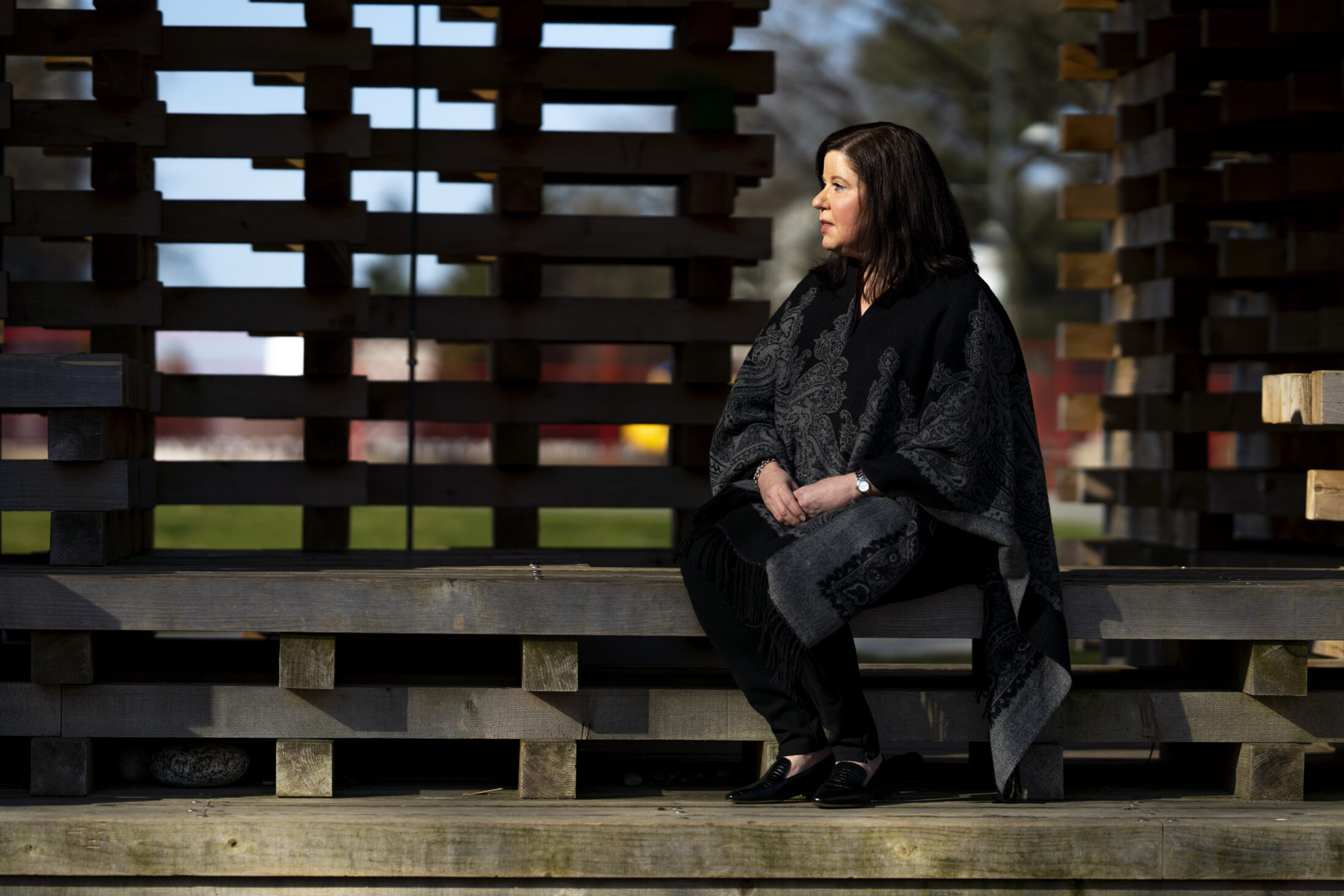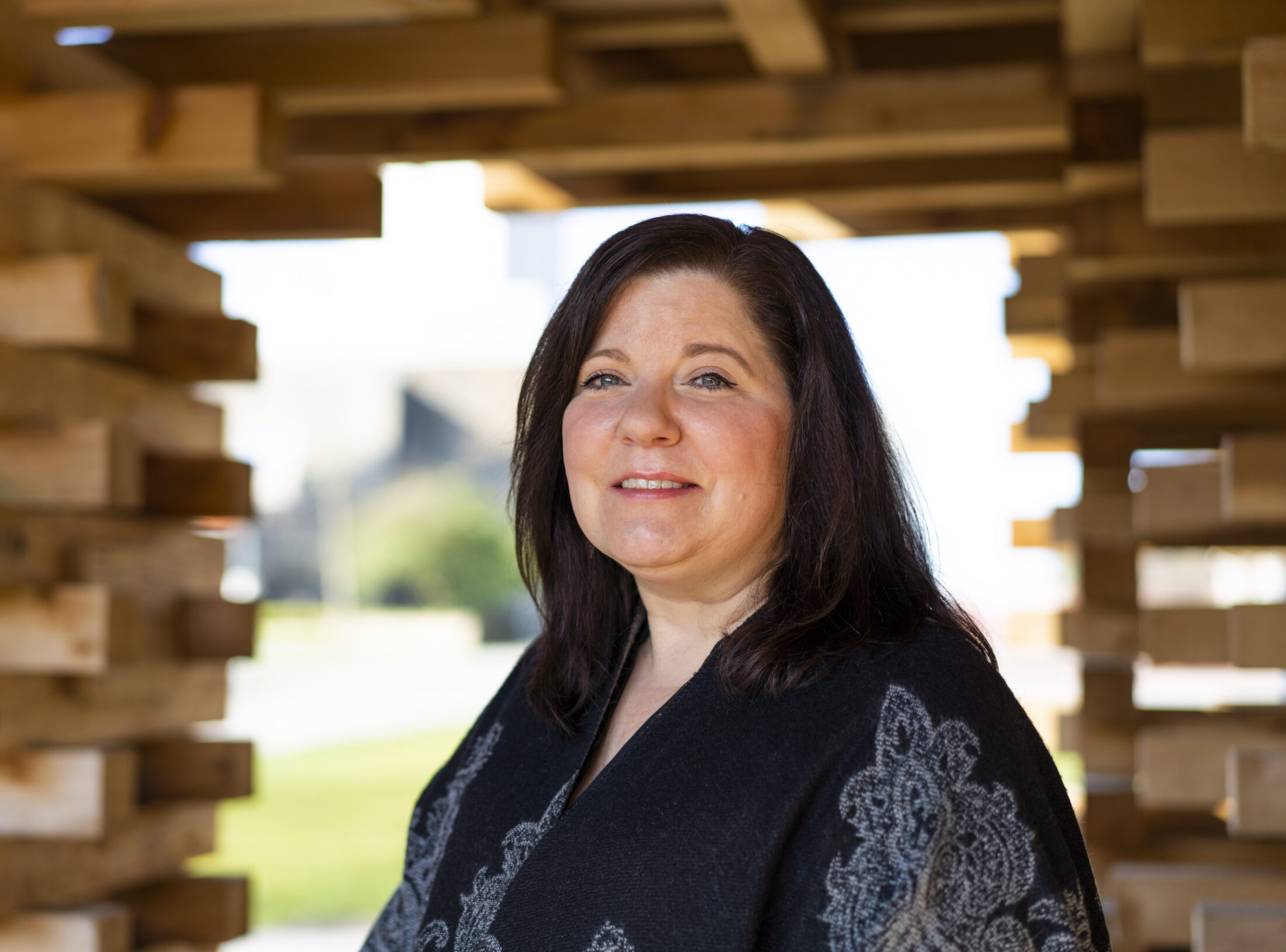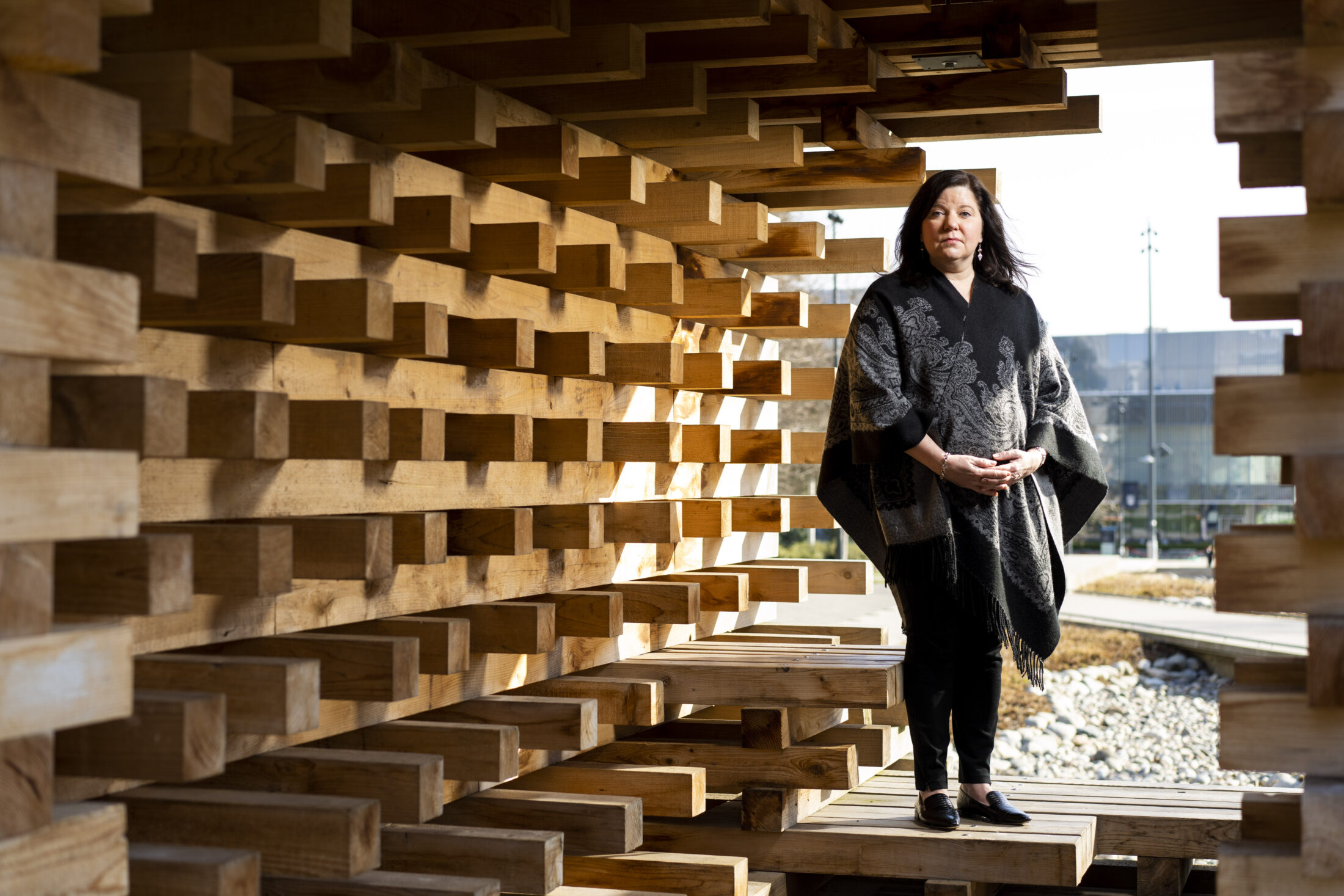
Drawing (on) a decade of climate change in the North
Artist Alison McCreesh’s latest book documents her travels around the Arctic during her 20s. In...
Sheryl Lightfoot didn’t expect there would be much interest in the news of her recent appointment to the United Nations Expert Mechanism on the Rights of Indigenous Peoples.
Yet reporters from across B.C. reached out following the March 24 announcement, eager to know more about the first Indigenous woman from Canada to represent North America on the expert mechanism, which is composed of seven independent experts on the rights of Indigenous Peoples. The experts, who are appointed by the UN Human Rights Council, assist member states like Canada in achieving the goals of the UN Declaration on the Rights of Indigenous Peoples.
“There’s been actually, both from Indigenous press and non-Indigenous press, a whole lot of interest … it’s blown me away,” said Lightfoot, an Anishinaabe from the Lake Superior Band of Ojibwe who is an associate professor at UBC in political science, Indigenous studies and the School of Public Policy and Global Affairs.
She also holds the position of Canada Research Chair in Global Indigenous Rights and Politics, studying the implications of Indigenous rights movements, the implementation of Indigenous rights in theory and practice and state responses to rights claims.
Lightfoot, who grew up in Minneapolis, believes part of the interest in her appointment stems from the Black Lives Matter movement and the summer of racial reckoning in Canada and worldwide last year. Another factor is her work at UBC, where she is
senior advisor on Indigenous affairs to the UBC president and co-led development of UBC’s Indigenous strategic plan, which outlines the university’s commitment to supporting the rights of Indigenous Peoples.
“Even before the Black Lives Matter movement, we had huge interest from non-Indigenous communities at UBC in the [Indigenous strategic] plan,” Lightfoot said.
Heightened interest in Indigenous Rights and movements also stems from provincial legislation aimed at implementing the UN Declaration on the Rights of Indigenous Peoples and the introduction of similar federal legislation through Bill C-15, she said.
In her new role, Lightfoot will be following in the footsteps of Grand Chief Wilton Littlechild and Dr. Kristen Carpenter, both of whom served on the UN expert body before her.
The Narwhal caught up with Lightfoot to discuss her new role and thoughts on how Canada and B.C. have fared on their promises to uphold the UN declaration, which affirms Indigenous Peoples’ rights to self-determination, equality and non-discrimination.
When I was shoulder-tapped and asked to consider having my name come forward [for the position], I was of course honoured and humbled because I knew who my predecessors were and how honorable and prestigious they are. Then in late December, I was shortlisted and contacted for the interview process, which then happened in January.
Four of us went through the interview. Following the interview process, the group that was doing the recommendation [ranked] three of the four names that they put forward. I came out as the number one ranking and had my moment of ‘oh my gosh, this could actually happen.’
The next step was for the president of the Human Rights Council to take a look at the candidates and put forward her recommendation. That letter came in February and that’s when I had my excitement and feelings of overwhelm, and honestly just readiness to dive in and start doing this work.
It was also difficult to keep it quiet because it was going to be almost six weeks before it was acted on by the Human Rights Council. So I did my best to keep my excitement [in check], to begin turning my mind to how I would transition and tailor my own academic work so that it would align with the work of the expert mechanism in the coming three years. But the excitement was building, and when the Human Rights Council acted by consensus on that recommendation, then of course, I was extremely excited and humbled.
It’s a bit daunting to be taking this step and expanding work to the global level. I’m not shy about taking on extra work, but I always am conscious of wanting to do it in the best possible way and also trying to make sure that I create supports around me, that I have students involved, that I have proper consultation going on so that I can do this work in an honourable way and with the highest integrity.

In March 2021 Lightfoot was named the North American member on the United Nations Expert Mechanism on the Rights of Indigenous Peoples. The announcement marks the first time an Indigenous woman from Canada has been appointed to the prestigious position. Photo: Jimmy Jeong / The Narwhal
I’m not a survivor of residential schools but the three generations ahead of me all were, so by the time I came to be, that [had] created a great deal of disruption, pain, trauma, language loss, migration.
Growing up in the ’70s, I think, was an advantage, ahead of what the previous generation had, because there was so much focus about revitalizing culture and refreshing language. For all of us that were in the urban spaces — and I grew up in the Minneapolis urban Indigenous community — there was a lot of attention there in the late ’60s, early ’70s, [on] the political movements that were the centre of the American Indian movement. But also associated with that was cultural revitalization.
I think growing up in that place and in that time planted a seed. In some ways, I say that my current work as an academic even began when I was five years old, which was the time of the Wounded Knee Occupation in South Dakota. It was the time of a shift, also, from the American Indian movement into the international sphere with the launching of the organizations that did end up going international.
Then there’s the socio-economic realm. I grew up as the child of a single mom who was the child of a single mom, so poverty and difficult socio-economic conditions were the reality. My mother’s big dream for both of her daughters was that we would go to university. To her, that was going to be the pathway out of the difficult socio-economic condition that we had been raised in.
But then again, if we go with the ethos of the time … [Anyone with an] education is expected by everyone to come back and help the people. We were also given that message early on too.
We both have done that in our own way. My sister has been an elementary school teacher for more than 25 years at an American Indian magnet school in St. Paul [Minnesota, where] they’re teaching our language and our neighbouring people’s language to the little ones.
After I did some community-based work in the urban area first, I went back for a PhD mid career, in my late 30s. So I’m giving back in different ways. My sister always laughs and says we get students at opposite ends. So [she] starts them out. And then [I] graduate them from university and beyond. Together, we make a complete circle.
A couple of projects that are currently underway will pass to me, and I’m very happy to pick up the baton on both of them.
One is looking at the rights of the Indigenous child around the world, and the other one is a project on Indigenous self determination around the world and how the rights of self determination are being advanced by different stakeholders.
Both those reports will prove tremendously informative to the UN system. If we think about the rights of the Indigenous child, that report will help create rules for how UNICEF does its work with Indigenous children.
Another key project going on on the international level in preparation for the next 10 years is the international decade on Indigenous languages after it became clear that one year was not enough — that focused attention needed to be for a decade in order to revitalize and save so many Indigenous languages. Those are three ongoing pieces of work that are already in place.
One of my main concerns is the question of free, prior, and informed consent. The expert mechanism did a significant report on it about five years ago, which was a good start, but I think we need to revisit this again because there are cases of unrealized free, prior and informed consent everywhere in the world.
It creates conflict when it’s not resolved and I think all sectors — governments, Indigenous Peoples, industry — are all seeking more clarity on what free, prior and informed consent means, how you get it, and how you know you have it.
How that gets handled is a matter of some delicacy. In order for the expert mechanism to be brought in, it has to be invited in. Before I was named as a member, you’ll find some writings and some quotes of mine from earlier articles that recommended that in our current conflicts, which sometimes feel irresolvable, it might be a good idea to bring in the expert mechanism to advise Canada and/or B.C. on best paths forward.
I would still advise that, especially since the Committee on the Elimination of Racial Discrimination (CERD) — a treaty body that monitors compliance by Canada — has issued multiple letters to Canada. The most recent one was in November 2020, advising a change of course on several projects and actually encouraging further discussion and development of appropriate legislation and policy practice. I weighed in on those on both letters and in both cases I recommended looking to the expert mechanism and issuing an invitation because it’s an expert panel of seven human rights experts from all regions of the world who have the ability to come in, listen to the various stakeholders and provide advice from the knowledge base that the mechanism has built up.
I have every reason to believe so. This is not just an anecdote. There are clear correlations between the areas that are best protected and Indigenous territories.
Quite frankly, if Indigenous lands and territories and cultures are respected in the ways that the UN declaration asks for them to be respected, there will also be a lot more land that is cared for under Indigenous jurisdiction and that in and of itself enhances the climate picture.

Canada has much work to do to move forward on implementing the rights of Indigenous Peoples in Canada, Lightfoot says. Across the country, governments, industry and Indigenous Peoples will all benefit from greater clarity when it comes to securing free, prior and informed consent for development and projects on Indigenous territories, she says. Photo: Jimmy Jeong / The Narwhal
I think there are some important acknowledgments of Indigenous jurisdiction over particular areas. There are some important examples of partnerships or collaborations which are also positive. What’s left to talk about is the significant amount of Crown land that is also under Aboriginal rights and title.
I believe that, given the underlying rights and title of most of those areas of Crown land, there must be discussions concerning co-management, co-development or, actually, Indigenous ownership.
Significant work in all areas: political, cultural, social, economic, health, education. Canada’s behind in almost everything, and far from having implemented the declaration.
I appreciate that in the current proposed legislation is the requirement for a national action plan. A lot of this work will need that action plan in order to really get rolling and get off the ground. I say that because bureaucracies are very resistant to change and they have a strong preference for whatever the status quo has been.
There’s quite a bit of controversy about it in a couple of different dimensions.
[Some people are] concerned that if it is passed, that will place roadblocks for Canadian industry and investment. I view that similarly to the idea that change is frightening. I think that will dissipate because over time, industry will have a landscape that’s more clear. When a project has the consent of Indigenous people to go ahead, there will be fewer lawsuits, fewer protests, fewer disruptions — and that is actually good for business. But before you get there, you have to do the process correctly, and the people involved have to fully embrace the project. There will be an adjustment period, no doubt, but doing business in a way that aligns with Indigenous human rights is also an exportable model for Canada. It becomes something that Canada could eventually be very proud of and bring to other locations, if done thoughtfully.
At the same time, I have heard worries from Indigenous folks that this legislation could be limiting the constitutionally protected rights of Indigenous Peoples in Canada. I hear their anxieties and I know the trust deficit that’s there. Having looked at the legislation, having given it careful thought, I don’t share that concern.
I think C-15 is actually a positive advancement that places those incentives for government officials and bureaucracies to advance the agenda that they might not otherwise have. I do worry a bit about proceeding without this legislation. On balance, [after] hearing all the concerns, the legislation does a great deal to advance implementation of the UN declaration. And it has already been five years since that last statement. It’s time to put more action on the ground.

Lightfoot says she has faith in Canada’s Bill C-15, the UN Declaration on the Rights of Indigenous Peoples’ Act, but says “it’s time to put more action on the ground.” Photo: Jimmy Jeong / The Narwhal
I think there have been successes, and I think there have been extreme challenges — both of those truths coexist. Most of the time since that legislation passed [in B.C.], we’ve been in pandemic times, so that’s not an ideal situation. But it is disturbing when there’s a commitment to implementing legislation, and then there’s such a dismal failure so quickly to demonstrate the principles of the UN Declaration in practice. That saddens me a lot, and it’s very discouraging.
However, I also see collaborative and cooperative work on smaller scales, that doesn’t get the visibility that the challenges or the failures do. But I think most of the work in implementing the declaration is going to be piece by piece, project by project and I want to also recognize those movements.
The expert mechanism is charged with providing expertise to the Human Rights Council and is charged with advising states. So some of the work you’re talking about can happen through other channels, like the universal periodic review, like the CERD [Committee on the Elimination of Racial Discrimination] committee, because those are the monitoring bodies.
So they will actually issue the opinions on whether Canada or any of its provinces are aligning or not aligning [with the declaration], and it will often recommend that they contact the expert mechanism to get advice on how to alleviate the issue or the problem that has been identified.
I look forward to playing my role in that respect.
Get the inside scoop on The Narwhal’s environment and climate reporting by signing up for our free newsletter. On March 17, federal Conservative Leader Pierre Poilievre...
Continue reading
Artist Alison McCreesh’s latest book documents her travels around the Arctic during her 20s. In...

I’ve watched The Narwhal doggedly report on all the issues that feel even more acutely...

Establishing the Robinson Treaties, covering land around Lake Huron and Lake Superior, created a mess...
